They might stain your cutting board every time you chop one open, but there’s no arguing – beets are some of the most nutritious, delicious vegetables you can grow and cook.
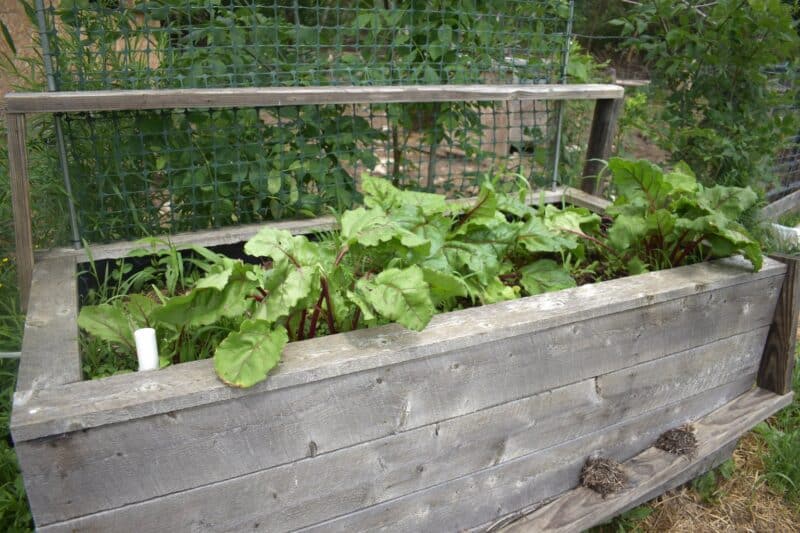
These root vegetables are cultivated all over the world, and they can be served roasted, raw, pickled, and more. Packed with essential minerals and vitamins, the beet is a superfood that you should already be growing in your backyard garden.
Beets are an easy crop to grow, and in many places, you can cultivate them throughout much of the year.
Here’s everything you need to know about planting, growing, and harvesting beets – as well as tips on all the things you can do with them once you get them inside!
Nutritional Value of Beets
Beets have an impressive nutritional footprint. Low in calories but high in fiber, phytonutrients, vitamins, and minerals, these root veggies are both great tasting and good for you.
Here are some of the nutrients you will find in just one serving (roughly three and a half ounces) of cooked beets:
| calories: | 44 |
| protein: | 1.7 grams |
| fat: | 0.2 grams |
| fiber: | 2 grams |
What’s even better is that beets are absolutely loaded with all of the vitamins and minerals you need to stay healthy. Beets are about eighty-eight percent water and ten percent carbohydrates, making them a great food to add to a healthy diet. Here are some of its most important nutrients:
- Vitamin C
- Folate
- Magnesium
- Potassium
- Manganese
- Iron
- Phosphorous
- Vitamin B6
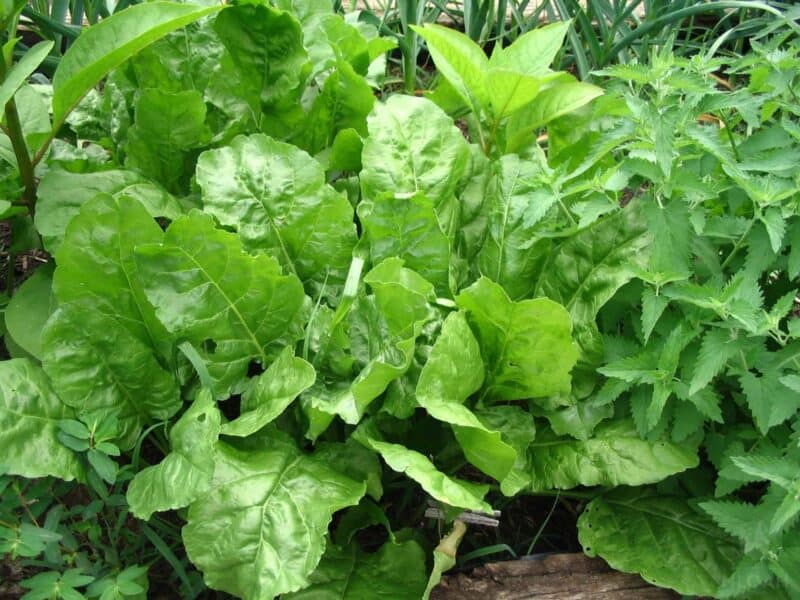
Varieties of Beets
If you love beets, you’ll want to grow a variety of seeds in your garden this season. There are tons of varieties of beets out there, but keep in mind that some beets, like sugar beets, aren’t really designed for the kitchen.
Sugar beets are grown commercially to make white sugar, while table beets are designed to be eaten raw or cooked at home.
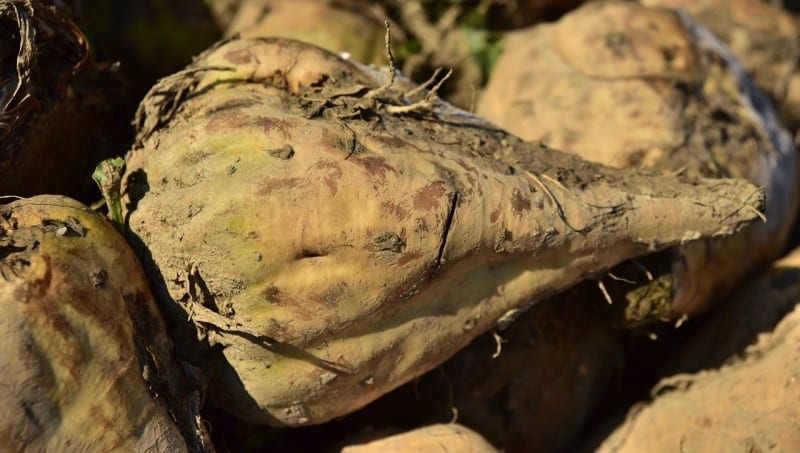
Table beets have more natural sugar than any other vegetable, including sweet corn and carrots. Sugar beets are closely related to table beets, but are much larger, growing up to a foot in length.
Beets have been cultivated since the Middle Ages, when it was used to treat a variety of conditions, most of them related to digestion. In the mid-1800s, beets were often used to color wine as well.
Today, most cultivars of beets that are grown in backyard gardens are those that require 55 to 65 days to germinate. All of these cultivars can be harvested earlier to be used as greens or allowed to grow longer in order to harvest the delicious taproot portion of the beet.
Here are some varieties to consider:
- Albino: a white variety of beet
- Bull’s Blood: heirloom
- Chioggia: sweet Italian heirloom, with red and white roots
- Crosby’s Egyptian: heirloom
- Cylindra: heirloom with a long root
- Formanova: cylinder-shaped heirloom with a long root
- Detroit Dark Red Medium Top: heirloom that grows up to three inches in diameter
- Early Wonder: heirloom, ready for harvest in 52 days
- Golden Beet: heirloom, yellow root that tastes exactly like the red variety
- Lutz Green Leaf: grows up to four times the size of most beets, good for winter storage
- MacGregor’s Favorite: heirloom, carrot-shaped
- Perfect Detroit
- Red Ace: hybrid
- Avenger: hybrid variety best grown for greens
- Big Red: 55 days to maturity, great late-season producer
- Gladiator: 48 days to maturity, great for canning
- Pacemaker: 50 days to maturity
- Red Ace: 53 days to maturity, vigorous grower
- Warrior: 57 days to maturity, has globe-shaped roots
- Green Top Bunching: 65 days to maturity, has bright red roots and delicious greens
- Sangria: heirloom, ready for harvest in 56 days
- Sweetheart: heirloom, ready for harvest in 58 days
- Touchstone Gold: yellow root
Preparing to Plant Beets
Beets grow best at cold temperatures, making them the ideal choice for duplicate plantings. You can plant beets both in the spring as well as in the late summer.
They will grow best when temperatures are around 60 to 70 degrees, but especially when nighttime temperatures dip to 50 or 60 degrees. If it gets colder than 50 degrees, there is a chance that your beets will go to seed.
Beets grow best in soils that are loamy and acidic. Conduct a basic soil test before planting. The soil should be at a pH between 6.0 and 7.5.
If it’s too alkaline or otherwise too rocky, hard, or composed of clay, you can mix in some compost to loosen the soil and improve its structure and acidity. Wood ash can also help, as it contains tons of potassium that the plant will use to develop strong, healthy roots.
Growing Beets from Seed
Select a sunny location for your beets. This will produce the best roots. If you don’t have a sunny spot in your garden plot, you can still grow beets – just keep in mind that they will produce lots of leafy greens instead of dense roots.
Beets should always be grown from seed that is sown directly into the garden plot. You really can’t transplant beets, as they are root vegetables that won’t hold up well to those stressors.
Instead, select a nutrient-dense section of your garden, or consider planting your beets in raised beds. This will provide them with plenty of room to produce long, healthy roots – the portion of the beet that is the most important, after all!
Sow your seeds far apart – they don’t like to be crowded and will produce spongy, underdeveloped globes if they aren’t spaced far enough apart.
Plant your beet seeds about one inch deep and three or four inches apart. Alternatively, you can sow them closer together and then thin them later. It’s not a waste – you can use the tops as salad ingredients.
It will take about a week for your seeds to germinate. The outer seed coat of the seed will need to soften. During this time, it’s important that you keep the soil moist – not wet – to ensure proper germination.
For a fall harvest, plant beets about eight to ten weeks before the first expected frost. You’ll be able to harvest them around Thanksgiving. Fall-harvested beets tend to have a sweeter taste and a stronger color than those planted in the spring, as the cold temperatures encourage a release of sugar in the roots.
For a spring harvest, you can plant beets as soon as the soil is somewhat dry and workable. This is generally between March and the middle of May. In some places, you may have to wait until April for the soil to dry up and the weather to warm.
Caring for Beets
Mulch carefully around your beets to help them retain moisture. Beets that are waterlogged can rot, while those that are too dry won’t develop uniform roots. Mulching well can protect your beets from hot or cold snaps, too.
You can use any kind of ingredient as your mulch, but those that work best include straw, hay, shredded leaves, or grass clippings.
Beets like consistent moisture. They generally require about an inch of water each week. Although they are cold tolerant and can even tolerate a light frost – they are hardy to 20 degrees – it’s important that you cover the planting area with row covers until seedlings have appeared. This will ensure proper germination.
If you’re growing fall beets, you can protect your beets with row covers or row cover fabric to prevent the area from freezing. Otherwise, you don’t need to worry about frost or cold killing your plants.
Can I Grow Beets in a Container or Indoors?
As long as you have a container that is at least twelve inches deep, you can easily grow this root vegetable inside or in a container. Just make sure you are good about watering your beets, as the containers won’t retain moisture as well as an in-ground garden.
You will also want to make sure you use soil that is light and loamy in your container. Because the soil will remain stagnant, you need to ensure that your beets’ roots have plenty of room to sprawl.
Avoid the temptation to plant your seeds too close to one another, and make sure your container receives plenty of sunlight. If you want to expose your beets to ideal temperatures, keep the containers indoors during the day and move them outside at night.
Common Beet Pests and Diseases
One of the biggest problems related to beets is the pest known as the beet leaf miner. This creature tends to affect beet leaves most often. Luckily, you can easily get rid of this pest by tearing off the damaged portion of leaves.
Check your leaves every day to make sure there aren’t any pests. You can also keep these bugs away by installing row covers over your beets between May and late June. The rest of the season they shouldn’t produce problems for you.
One common disease that affects beets is black heart. Caused by boron deficiency, this disease causes your beets to develop hard black spots. You can address this by adding compost or spraying plants with seaweed extract. A consistent problem with black heart is a good indication that you need to test your soil before planting.
The best way to prevent any kind of pest or disease? Rotate your crops.Beets are closely related to spinach and Swiss chard, so it’s a good idea to avoid planting beets too close to these crops, as they’re vulnerable to similar diseases.
You should rotate crops every season to resist overwintering pests and diseases, and use cover crops during the off-season to keep the soil fertile and workable.
How to Harvest Beets
Beets are usually ready for harvest within six to eight weeks, but they can also be enjoyed at the first thinning – all you have to do is harvest the greens to be used in salads.
Otherwise, beets can be harvested as soon as they reach an inch in diameter. This will yield you baby beets, which are about an inch in diameter and can be cooked with their stems. Larger beets should be harvested later on, usually within 50 to 65 days depending on the variety.
When you pull your large beets, leave at least an inch or two of the stems attached to prevent any staining in storage. You can harvest fall beets with the tops attached and then cut them off close to the roots.
These can be stored in a box of sand in a cool location, like your basement. Greens can be cut and stored in the refrigerator – these will last around a week or so.
How to Preserve and Prepare Beets
You don’t have to be picky when it comes to preserving your beets – you have lots of options. You can process them in a canner to last in storage for quite some time, but remember that you must use a pressure canner to avoid any potential contamination.
If you want to use a water bath canner, a good alternative is to pickle your beets first. Pickled beets are delicious and taste great on sandwiches and salads.
You can also dehydrate your beets. You will need to cook them in boiling water for about half an hour at first, but after you do this you can use a dehydrator to make your own delicious beetroot chips.
Another option is to freeze your beets. Again, you will want to blanche them first, but then you can store them in the freezer for a long period of time.
Beets can also be stored in the root cellar. You should remove the greens but leave an inch or two of stem attached. In the root cellar, you can store them in light sand for several months at a time.
Beets are quite versatile in the kitchen. You should select beets that are heavy and have fresh, unwilted tops still attached. While the globe, root component of the vegetable is usually what attracts people most to these tasty veggies, you should know that you can also eat the leaves. Otherwise, beet roots taste delicious raw, steamed, sautéed, roasted, pureed, baked and more.
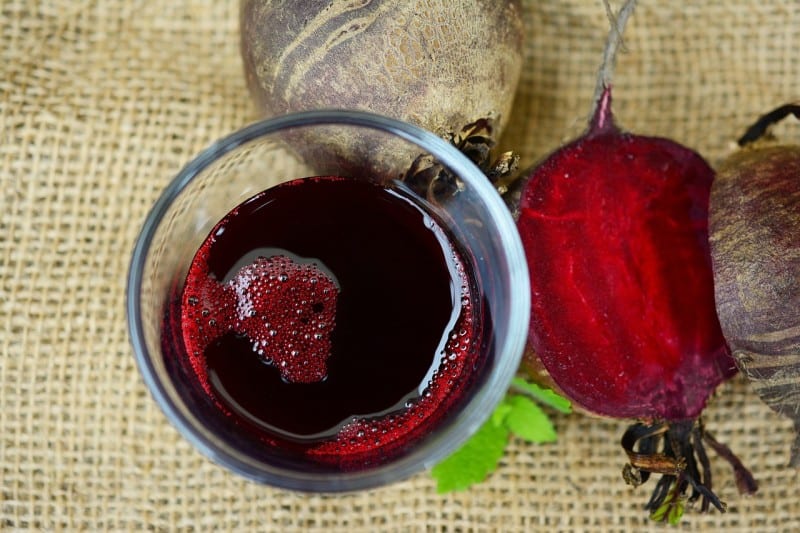
Here are some popular recipes you can make with beets, many of which are just as tasty with beets that have been frozen, canned, dehydrated, or pickled:
- Beet salad: Grate some raw beets and mix them into your favorite pasta salad, green salad, or coleslaw.
- Beet juice: Stick some beets in a blender (you can add a bit of fruit juice or your other favorite smoothie ingredients) and mix them up. Fresh juice, with no added sugar!
- Sautéed beet leaves: Beet leaves taste just as good as other leafy greens, like spinach and kale, so feel free to substitute with them any time you get the chance.
- Beet dip: Blend your beets with some Greek yogurt or sour cream for a tantalizing dip that goes great with crudité, crackers, veggies, and more.
- Beet soup: Beet soup, or borscht, is a common dish in Eastern Europe.
There you have it! Everything you need to know about growing beets. If you aren’t already growing beets in your garden, make sure you pick up some seeds to get a crop in the ground for the fall.
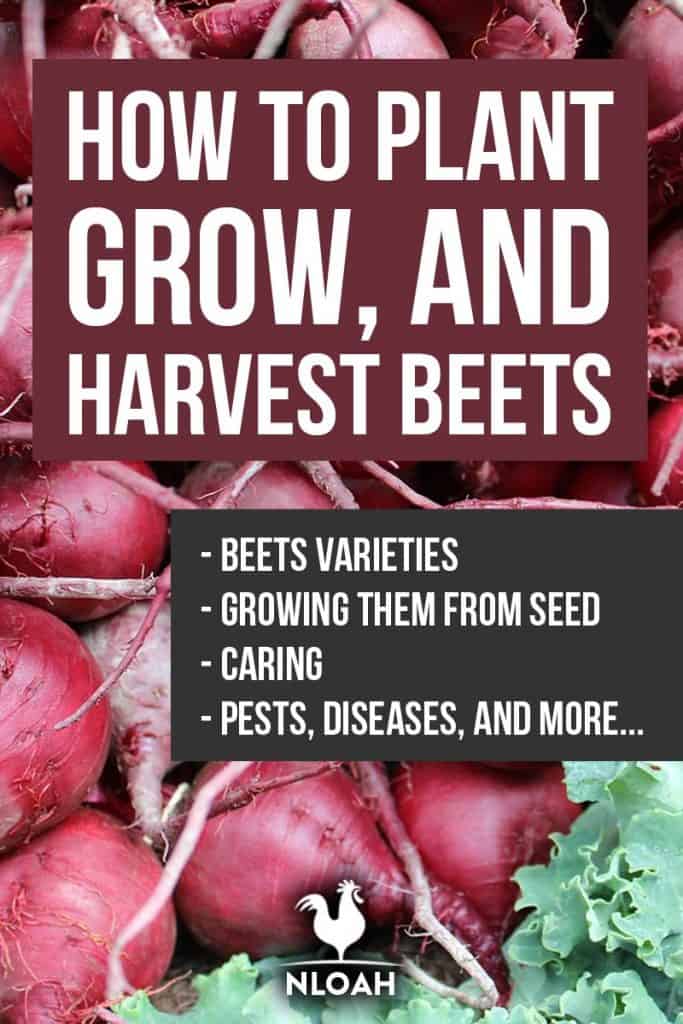

Rebekah is a high-school English teacher n New York, where she lives on a 22 acre homestead. She raises and grows chickens, bees, and veggies such as zucchini (among other things).
